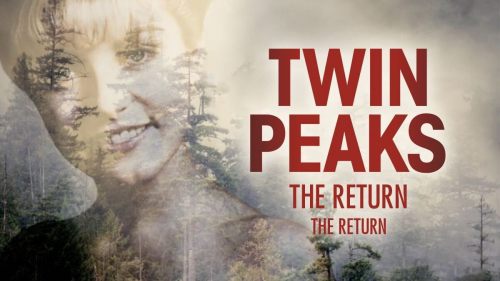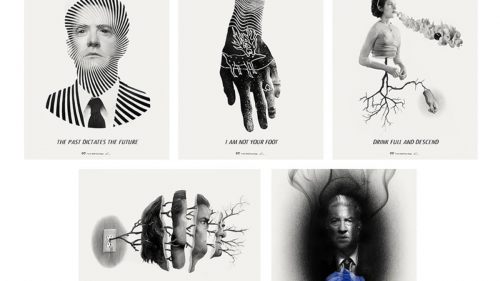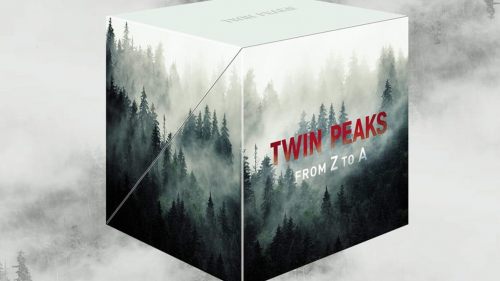TWIN PEAKS: THE RETURN Review: Part 14
Spoilers, obviously.
The big overarching theme of Twin Peaks: The Return seems to be what Miguel Ferrer’s Albert refers to in episode three as “the absurd mystery of the strange forces of existence.” (Coincidentally, this is also the subtitle of David Lynch’s unmade film Ronnie Rocket.) The original Twin Peaks was about how the trauma of one girl’s murder destroyed an entire town, unmooring its denizens, creating chaos. If stories are a reflection of their time, then maybe Twin Peaks: The Return is about how a single traumatic event reverberates into the future, fracturing it, haunting it. And it might also explore one of the sources of America’s darkness, modern America’s original sin: dropping the atomic bomb. Characters from OG Twin Peaks are lonelier, more alienated. Dark entities are multiplying, and the membrane between worlds seems more permeable than ever. Destroying Mr. C/Dark Cooper and bringing back the real Cooper may just be the key to restoring balance between worlds. There’s no real way of knowing yet. And, since it is David Lynch and Mark Frost, we might not ever know.
Fortunately, a few mysteries are solved in this week’s big-picture episode. The origin of the Blue Rose is the first. Albert tells Tammy about case number one: in 1975, two young field agents find two women inside a motel room. The woman who’s been shot is named Lois Duffy, and her last words are, “I’m like the blue rose.” The woman who shot Lois Duffy is also Lois Duffy. Those two investigating officers were none other than Gordon Cole and Phillip Jeffries. Tammy refers to both the blue rose and the dying Lois Duffy as a “tulpa,” an unreal thing, an entity or being manifested into existence by thought, a Tibetan-Buddhist concept. And then Gordon Cole and Diane show up. Diane hears about the wedding ring inside Major Garland Briggs for the first time, and she reveals that Janey-E is her estranged half-sister, which makes me wonder whether Janey-E and Dougie were Diane’s and Cooper’s suburban doppelgängers or tulpas. Gordon Cole gets on the horn — it’s finally, maybe, hopefully time to find Dougie.
In perhaps this season’s most relatable moment, Gordon Cole tells Tammy and Albert he had that dream about Monica Bellucci. Bellucci says ‘the ancient phrase’: “We’re like the dreamer who dreams and then lives inside the dream.” And then, as if this season weren’t meta enough, she asks, “But who is the dreamer?” David Bowie’s Phillip Jeffries appears in the dream, a scene from his appearance in Twin Peaks: Fire Walk With Me. Jeffries is there, but isn’t there, yet he points accusingly at Cooper: “Who do you think that is there?” There is no new Bowie footage, of course — just enough Fire Walk With Me Bowie to make your heart hurt.
Hawk, Andy, Bobby, and Sheriff Frank Truman go looking for Jack Rabbit’s Palace in the woods per Major Garland’s instructions. The crackling in the woods reinforces the theory that entities originating from one of the Lodges are transported or summoned via electricity. They find the eyeless lady from the Purple/Mauve Room, Naido, and she’s alive. Andy gets sucked into a vortex, not unlike the one that almost took Gordon Cole. Andy meets the Giant in what appears to be the White Lodge, and the Giant introduces himself as the Fireman. Andy has visions of: BOB, the Francis Bacon-esque creature that appeared in the glass box, the Woodsman, Laura Palmer and angels, Naido, two Coopers in the Red Room, Lucy, the utility pole that has appeared in both this season and in Fire Walk With Me. Andy returns to his own plane of existence carrying Naido. He explains that she’s important, that someone wants her dead, that they can’t tell anyone about her. Bobby, Frank, and Hawk believe him, but they remember nothing.
James Hurley pops up along with a new character, Freddie Sykes, the most British guy of all time. James and Freddie are security guards at the Great Northern Hotel. Freddie tells James a secret because it’s James’s birthday, obviously: he once got sucked into a vortex and met the Fireman. The Fireman instructed him to get a single green glove, which would give him super strength, and he told him to move to Twin Peaks, where he’d find his destiny. James seems totally cool with that story.
And then a man with a ponytail wearing a ‘Truck You’ t-shirt tries to hit on Sarah Palmer at a bar. Dude does not handle rejection gracefully and starts throwing around slurs, and Sarah deals with him in the most satisfying and appropriate way possible: by removing her face to reveal “darkness within” (an interesting contrast to Laura taking off her face to reveal pure light at the season’s start), and then she bites his throat. Is this really Sarah Palmer? Or is it a tulpa, a dark double, a product of the Black Lodge? Hawk heard strange noises at Sarah’s house when he checked on her in episode twelve. Is the real Sarah trapped in her living room watching an old boxing match on loop? What the hell, man? The episode ends on an unsettling note: back to Audrey Horne’s missing boyfriend Billy. Tina’s daughter describes the last time she saw Billy to a friend: he jumped a six-foot fence, got into her house, bled everywhere, then fled, never to be seen again.
Highlights: Twin Peaks Sheriff Department arrests the hell out of Chad, the awful cop in league with Richard Horne. (Of course that guy’s name is Chad.) There’s also the brief introduction of a new character, a screaming FBI agent named Randall Headley played by Mad Men’s Jay R. Ferguson. My favorite joke, if you can call it that, is the wild squeegeeing of a window cleaner that triggers feedback from Gordon Cole’s hearing aid. Andy, one of my old-school favorites, is the MVP of this episode, he has a lot of screen time and gets to do some very tender, benevolent, classic Andy stuff, including holding Naido’s hand when he finds her in the woods. Bummers: No Dougie or Mr. C/Dark Cooper, no Dr. Amp, no forest freakout interlude from the way-too-high Jerry Horne, and not nearly enough Bobby Briggs.
Some general thoughts about this season: Twin Peaks: The Return is a work of epic proportions — cosmological, historical, philosophical, even autobiographical, like Lynch’s deeply encoded memoir. Dr. Amp spray-painting his shit-digging shovels is reminiscent of Lynch creating in his studio (as seen in the documentary David Lynch: The Art Life). It’s also telling that Lynch keeps Hieronymus Bosch’s triptych The Garden of Earthly Delights on his wall next to his desk, an open-to-interpretation work not unlike Lynch’s own that essentially depicts three worlds of pure evil and chaos, pure good, and the place between. The character Bushnell Mullins, Dougie’s boss, must be named after Bushnell Keeler, Lynch’s art mentor, the first man who gave him studio space, who encouraged him to paint, who wrote him a letter of recommendation for art school. And Lynch has said that “maybe [Kyle MacLachlan is] kind of an alter ego.” A lot of the new season seems rooted in Lynch’s practice of Transcendental Meditation, including Cooper-Dougie’s whole vibe of being an entity of pure consciousness and goodness and intuition.
At this point, all interpretations about whatever the hell is going on are valid. These new episodes of Twin Peaks feel like transmissions from a mysterious realm inside David Lynch’s brain, transmissions from a place both familiar and strange, an uncanny place. We just have to surrender to Twin Peaks: The Return, as we would a dream, or a nightmare. David Foster Wallace once wrote that there was “psychic intimacy” in Lynch’s work, that it seems to originate directly from Lynch’s skull, and we’re getting the most concentrated injection of Lynch’s unadulterated psyche yet. As weird as it is, it’s fundamentally a story of good versus evil, and it also feels deeply personal. It might just be David Lynch’s magnum opus.



